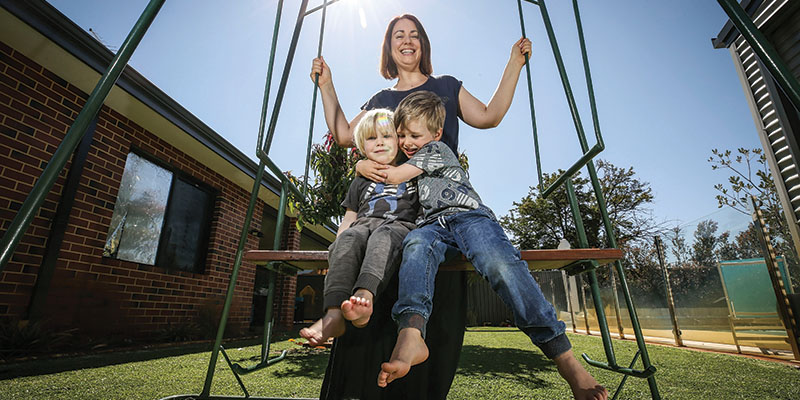
There’s a history of asthma and eczema on both Emma Snelgar and her husband’s side of the family, so it’s not surprising that she chose for her son Felix to be part of Dr Debbie Palmer’s research into sunlight exposure, vitamin D and eczema.
Like her husband, Emma’s first son Ollie, now aged five, suffered the painful skin allergy, with an additional egg allergy, when he was a baby. Emma said Ollie’s eczema
was particularly bad around his mouth, and eventually became infected due to constant picking and licking.
She tried everything before resorting to steroid treatment, which finally beat it.
When second son Felix was born, Emma wanted to do all she could to prevent him from suffering that same discomfort, so jumped at the chance to participate in research which may provide answers.
She signed him up for Dr Palmer’s study, the findings of which were published in the Journal of Allergy and Clinical Immunology in 2018. Felix was one of 195 children to take part, with 97 receiving vitamin D supplements and 98 a placebo.
Felix was also one of a number of participants across both groups to wear a UV dosimeter clip, designed to gauge his exposure to sunlight. Emma said this mostly occurred during the safer, low UV periods of the day – either early in the morning or late in the afternoon.
Test results showed both Felix’s UV exposure rating and vitamin D levels were ‘quite high’; and he was among the babies found less likely to be diagnosed with eczema than those who had had less sun exposure.
Emma, who works as a nurse for the Childhood Allergy and Immunology Research Group, encouraged anyone who could participate in studies of these types to help.
“The research is gradually uncovering things that do help to manage and prevent these allergies, and participants have the added benefit of having the immediate support of experts if they need it,” Emma said.
“For Ollie, his allergies weren’t life threatening but for other children they can be, so anything we can do to stop that happening to a child, if we can, we should do it.”
Dr Palmer said although the results were promising, much work is still needed to be done to determine safe levels of sun exposure.
“There’s a lot more work that needs to be done before we can translate this into a solid community message, but definitely from an allergy point of view, it’s opening up a really important area of research,” she said.
